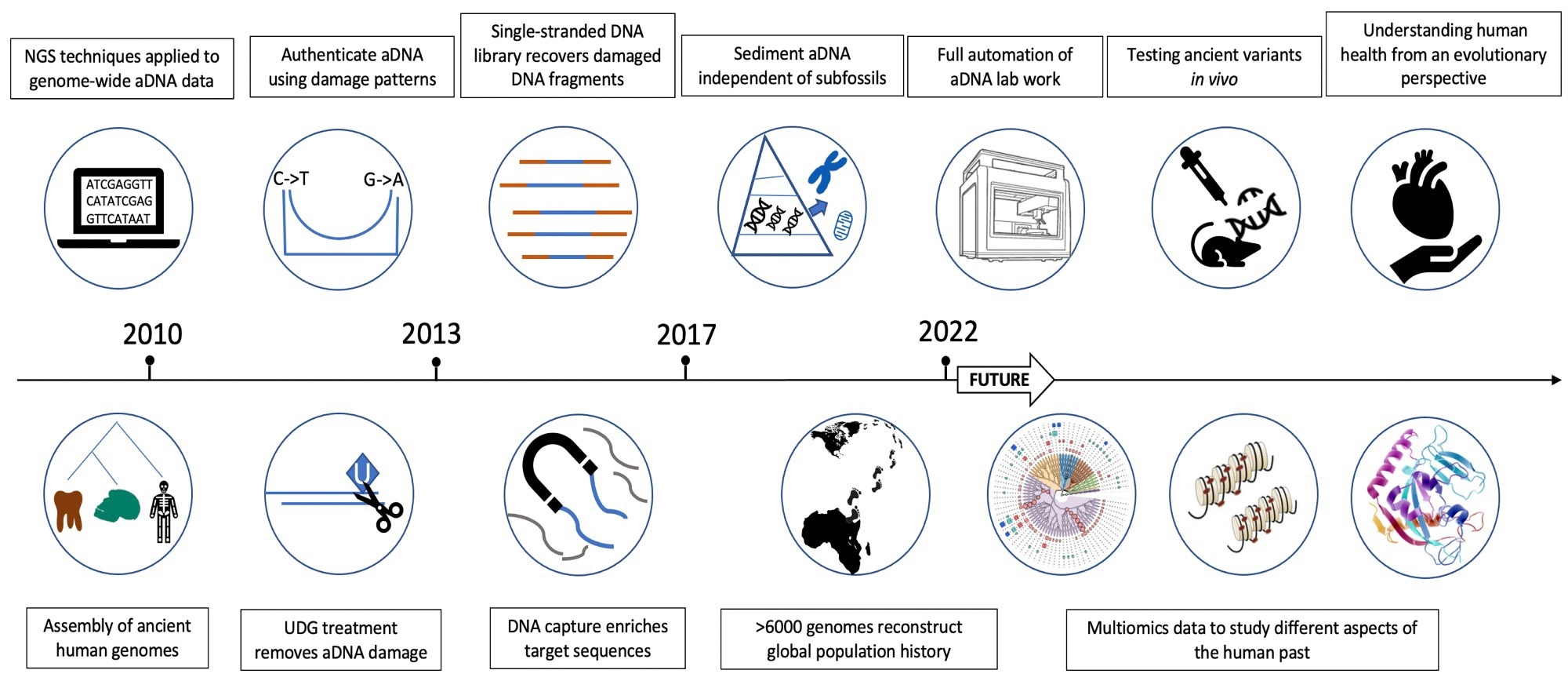Ancient DNA (aDNA) technology has been used for the past ten years by researchers working under the direction of FU Qiaomei at the Institute of Vertebrate Paleontology and Paleoanthropology (IVPP) of the Chinese Academy of Sciences (CAS) to learn more about the history of ancient human populations, particularly those in East Asia.
 Advances in aDNA technology since 2010. Image Credit: Institute of Vertebrate Paleontology and Paleoanthropology.
Advances in aDNA technology since 2010. Image Credit: Institute of Vertebrate Paleontology and Paleoanthropology.
The researchers’ work included reconstructing the entire genomes of the Neanderthals and Denisovans, two extinct groups of archaic humans, mapping the history of global population migrations and interactions, and determining the genetic makeup of the earliest East Asians.
To identify adaptive genetic changes in East Asian Ice Age populations, trace the creation of population patterns in northern and southern China, and determine the ancestry of the Austronesian population in southern China.
Recently, FU’s team analyzed the history of aDNA technological advancement, spoke about present-day technical problems and their fixes, and predicted the technology’s future.
On July 21st, 2022, the work was published in Cell.
High-throughput sequencing is a crucial technical advancement that is covered in the paper. It is a method for quickly sequencing enormous volumes of DNA. Theoretically, it is capable of sequencing every DNA molecule in a sample.
The aDNA field depended on polymerase chain reaction (PCR) methods to sequence a few particular DNA fragments before high-throughput sequencing became widespread. With this approach, researchers were only able to recover a very little quantity of DNA data and had difficulty differentiating real aDNA from contaminating DNA.
In addition to improvements in sequencing, aDNA researchers have also created new techniques for building DNA libraries to better represent the properties of aDNA. Two of the most crucial of these techniques are the creation of single-stranded DNA libraries and partial uracil-DNA glycosylase (UDG) treatments.
In addition to preserving some of the DNA damage signals at DNA fragment tips, partial UDG treatment also largely eliminates aDNA damage across the remainder of the molecule. This technique preserves the necessary aDNA characteristics for validation while increasing the accuracy of aDNA sequencing findings.
The direct sequencing of damaged and denatured DNA fragments that would be lost in conventional current DNA library creation procedures is made possible by the use of single-stranded DNA libraries.
The fact that aDNA samples often include a significant quantity of ambient DNA, however, has hampered the effectiveness of advances in library creation. Because of this, valuable endogenous aDNA sequences often make up less than 1% of the final sequences. By developing DNA and RNA probes with target-specific sequences, researchers have adapted DNA capture technology to the aDNA field to address this issue.
The target aDNA attaches to the probes after being added to sample extracts and is subsequently “fished out” from the enormous quantity of environmental DNA. The study of the ancient human genome makes extensive use of this technique. Currently, data obtained with the “1240k” probe set makes up more than two-thirds of the ancient human genome data.
In addition to significantly increasing the efficiency of aDNA sequencing, DNA capture technology also makes it possible to retrieve useful data from samples that would otherwise be too damaged for analysis.
By taking aDNA straight from “soil,” aDNA researchers have lately pushed the boundaries even farther (i.e., sediment). This approach has been used to retrieve DNA from prehistoric individuals who lived tens of thousands of years ago using material from the Denisova and Baishiya caves.
However, despite its useful outcomes, aDNA research has always been highly difficult. Because aDNA is especially prone to contamination, aDNA studies need considerable care. aDNA extraction and library creation formerly relied nearly exclusively on human processes. Some aDNA technologies have just started to be integrated by a few labs all over the globe into fully automated pipetting robot platforms.
Pre-processing of samples still has to be done manually at the moment. The next barrier for experimental aDNA technology is figuring out how to incorporate this labor- and time-intensive effort into an automated system.
Of course, the use of aDNA technology extends well beyond the historical human genome. The study of human evolution over long time periods, including how aDNA affects modern humans’ physiology and fitness, is another important area covered by paleomolecular research.
These topics include uncovering ancient epidemics as well as symbiotic microbial evolution via ancient microbial information; utilizing ancient epigenetic information to study the interaction among ancient animals and the environment; and using ancient proteins to study human evolution over long time periods.
aDNA is genetic data that has been time-stamped and documents the evolution and adaption of humans across tens of thousands of years. Several significant functional genetic haplotypes have been shown to have their origins in ancient human populations, according to aDNA investigation.
These genes affect skin tone, lipid metabolism, high-altitude survival, and innate immunity. The majority of the genetic variations discovered by aDNA investigations, however, still lack their roles.
In the future, researchers may create animal models using aDNA that discloses the function of several unidentified aDNA variations using the most recent gene-editing technologies. In doing so, we will be better able to comprehend how the genetic heritage of the prehistoric ancestors has impacted present human physiology and health.
Source:
Journal reference:
Liu, Y., et al. (2022) Evolving ancient DNA techniques and the future of human history. Cell. doi.org/10.1016/j.cell.2022.06.009.